Dawn of War 3's new art style explained
Relic, inspired by MOBAs, strives for more responsive gameplay.
Dawn of War 3 arrives with big armies, base-building, massive elite units and a new art style that on the face of it looks a lot more cartoony than the previous games in the real-time strategy series.
There's less detail in each unit, too, particularly compared to the highly-detailed soldiers of Dawn of War 2, which sacrificed big armies and base-building for micro-management of hero units.
So, what's developer Relic going for with Dawn War 3? Game director Philippe Boulle told Eurogamer the new art style is all about making the game more responsive - and yes, that's an approach in part inspired by MOBAs.
Responsiveness means different things to different people, of course. For Relic, a lot of it has to do with how quickly units respond to player commands, and how clearly those units tell the player they're responding.
"Think of a large unit like the Imperial Knight," Boulle said. "She is slower than other units, but that's part of her gameplay. That doesn't mean she is non-responsive. So when you click the animation starts, you get that feedback that okay, I'm moving, the audio cue comes in, the game tells you, yes, I understand that order and I'm starting to execute it.
"And things like abilities execute more quickly and have less of a hidden windup. That's one of the things previous games in the franchise have had a few problems in terms of, you would issue a command and there's very subtle things happening in terms of animation transitions, but the player doesn't really see those so it feels more sluggish than it should - or that the audience has every right to expect now. So the game moves faster and responds more quickly than it ever has before."
Dawn of War 3 fuses the massive armies and base building of Dawn of War 1 with the powerful hero units of Dawn of War 2 to create a hybrid RTS that really pops. In a gameplay demo, I saw a large-scale battle with all the explosions and screen-shaking special abilities you'd expect, but things really took off when the huge Imperial Knight appeared on the battlefield. And when you trigger the Space Marine's super-ability, the Orbital Bombardment, a laser fires from orbit. This beam gains in size and power the more targets it vaporises, so you can imagine just how busy your average Dawn of War 3 scrap can become.
Dawn of War 3's new art style, then, is as much about helping the player make sense of all the on-screen chaos as it is making the game feel more responsive to your clicks.
An example: one of the Space Marine's elite units (you pick three before each battle) is the Assault Terminators. They're a slow-moving, tough melee unit which act like tanks, but they're two abilities see them spring into action. The teleport lets them relocate and disrupt enemies, and the hammer slam lets them clear enemies out of an area.
When everything is kicking off, being able to differentiate your Assault Terminators from other units on the battlefield is crucial, because you need to use them in such a reactive way. The ideal situation is with a click they'll jump into cover, kick everybody out then capture that cover. Boom.
"The art style is completely driven by that idea of clarity and the aspirational fantasy of the IP," Boulle said.
"Clarity wise, we're all about creating gameplay spaces you can understand, using brightness where it makes sense to draw attention about specific gameplay mechanics.
"And then it's also about putting ourselves in that science fantasy space. We're dealing with large armies and over-the-top units, so it's not about every scratchy detail on an individual Space Marine's shinguard. It's about seeing that squad of Space Marines that stands out, and I understand where they are, I can see them moving, I can see what weapon they're firing because it's really crisp and clear, and they are in the colours I chose for them, and it stands out. That's what that art style is about."

One of the reasons I love Dawn of War 2 and its predecessor is because I felt they both captured the grittiness of the Warhammer 40K universe. Here we have an endless, bloody war in which limbs are torn off and blood spurts this way and that. Here we have a universe packed with battlefields ground down by bolter fire, where armies trudge through the dirt, where death is inevitable.
So, Dawn of War 3's brighter, more cartoony art style had me a little worried at first. But I get the trade-off: by switching the game's look, Relic is able to create a gameplay feel that's more modern, that's more in-line with the expectations of the millions who play MOBAs every day. It's a design decision.
"It's absolutely less photo-realistic - or aspiring to be," Boulle said. "Dawn of War 2 pushed very far in that direction for the time, and it was a much smaller scale game. You were controlling a few squads and you were up close to them. There it made more sense.
"For Dawn of War 3, you're controlling large armies, and we want these epic, over-the-top heroes to stand out in the middle of it. So there's definitely a conscious effort to reduce the amount of noise so you can parse what's happening. It's really about getting that clarity of gameplay. The art serves the gameplay."
Relic has been working on Dawn of War 3 for two-and-a-half years now, even amid the turmoil the Canadian studio suffered from the bankruptcy of previous owner THQ and the rescue acquisition by Sega.
Throughout, the developer came up with a number of prototypes for Dawn of War 3. I had wondered whether Relic was tempted to go full MOBA with the series, in the context of the relative decline of the RTS genre. But, according to Boulle, the studio never wavered from its commitment to RTS.
"At its core, Dawn of War is an RTS. So there was never really the question of doing a Dawn of War 3 that wasn't an RTS," he said.
"That's not to say we're not paying attention to the MOBA space, and the lessons that come from that. We play MOBAs. We love them. Things like The Last Stand mode from Dawn of War 2 lived in that MOBA space even before the big players.
"So there's a lot of lessons from there in terms of the elite gameplay and making those abilities really crisp, and making the game as a whole more responsive, clearer and easier to understand."

Dawn of War 3 comes with three races: the Space Marines, the Orks and the Eldar. That's fewer races than previous games in the series have launched with. I found this news disappointing, particularly as someone who held out hope that the game would give The Dark Eldar, secretly the most interesting race in the Warhammer 40K universe, some love.
"These were the factions that best embodied the story we wanted to tell," Boulle countered, "and that crisp differentiation we wanted to provide in the main title. The Space Marines, the Orks and the Eldar play very differently. They have really different identities and together they allow us to tell this really compelling story.
"There's many many more races or factions out there. I am a long-standing 40K fan and I would love to get into any and all of them. But I think it's really important to start with a really solid foundation like that. And, we decided early on that these were the three races that appealed to us from a gameplay standpoint and resonated with the story. And so that's who we're releasing."
Dawn of War 3's campaign rotates the player's point of view, shifting between Space Marine, Ork and Eldar missions. The idea is to give players an early taste of each of the factions so they can choose which to dig into sooner rather than later.
Here's the setup: the Space Marines, led by commander Gabriel Angelos, the Orks, led by warlord Gorgutz, and the Eldar, led by seer Macha, are fighting for control over a planet called Acheron. They find a mythical weapon and "a terrible new threat rears its head". Whatever could it be?
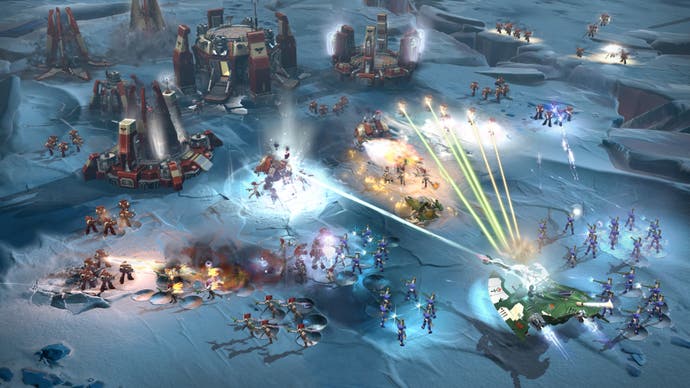
There are a few types of units in the game: line units are your bog standard soldiers (scouts, snipers, assault marines etc). Elite units are hero units, who have unique abilities. And super units are a type of elite unit, for example the Imperial Knight.
Before each mission you pick three elite units. There's a strategy here in that each costs a different number of Elite Points to deploy on the battlefield. Gabriel Angelos, for example, can be deployed early game because he doesn't cost that many Elite Points. The Imperial Knight, however, is an endgame unit, and costs a large number of Elite Points.
The idea is players can tweak the factions to suit their playstyle. So, if you're an early rush type of Space Marine player, you'll probably want Angelos in your army because he's quick to deploy and is good at disrupting infantry.
But if you're more of a turtle, you'll want the Imperial Knight in your army, because she can devastate armoured targets, the kind of which you'll face late game.
This all ties into a mysterious "build your army" aspect to Dawn of War 3, which Relic won't go into right now. All Boulle will say is it's about more than a fancy new paint job for your units.
"When I talk about build your army as a pillar, I am talking about making gameplay decisions," he said.
"Aesthetics will be a part of it. The franchise has a lot of aesthetic flair. But from a game design standpoint, I'm talking about making gameplay decisions."



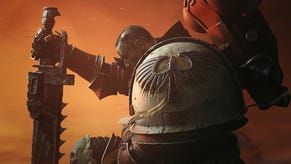
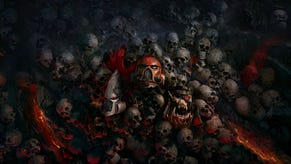


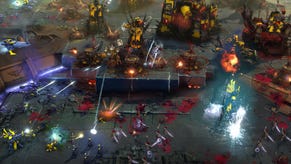
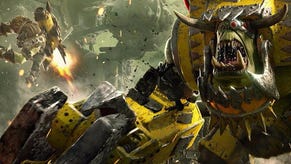



.png?width=291&height=164&fit=crop&quality=80&format=jpg&auto=webp)




.jpg?width=291&height=164&fit=crop&quality=80&format=jpg&auto=webp)
